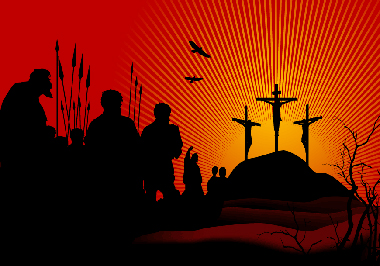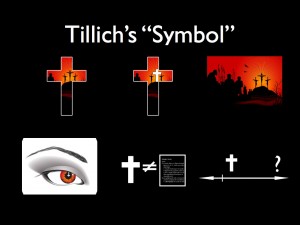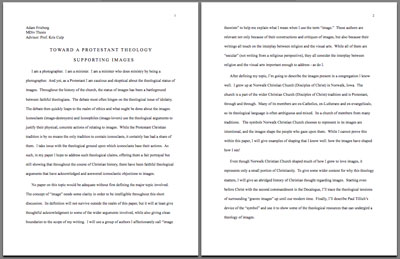I closed a chapter in my life on Wednesday. My senior thesis, which I proposed in spring 2008 (but which I started planning in spring 2007), is now done!
The thesis has three components: propose a topic at the end of the 2nd year, research and write it while taking a class in the winter quarter of 3rd year, and do a public presentation during the spring quarter of 3rd year. I wish I could say that I (or many of my classmates) could follow that schedule, but the process was never that simple.
I planned to write how the process of engaging with images can be a sacramental encounter. During the fall I read a bunch of sacramental theologians – especially Karl Rahner – and was primed to start writing. I had also read several image theorists, including James Elkins, W.J.T. Mitchell, Susan Sontag, David Freedberg and David Morgan. With four weeks left in the winter quarter colloquium, my classmates and professors/advisors told me that Rahner was not helping me. I was using too broad of a definition of sacrament, even for Rahner. So I switched theologians mid-course and started reading everything I could find from Paul Tillich on symbol and art (two very different things in his usage).
Three weeks ago, I was putting the finishing touches on the thesis when I had my wife Heidi edit it for me. As she said, my ending “jumped the shark.” And it did. So, after another two days of revision, it was ready. It felt SO good to hand in. Here it is:
After handing in the paper, I had to rush to get the presentation finished. The three days leading up to the thesis were the most hectic. My content was there, but it wasn’t organized and the graphics weren’t even close to ready. I spent at least a day trying to see how to visibly show Paul Tillich’s characteristics of “symbols”. I went to a stock graphic to show the crucifixion:

The Crucifixion
But there was a problem. In the Bible, the crucifixion contained women! But in this image, they were missing! A couple of swift fixes and this image was salvaged from being theological blasphemy.

Inclusive Crucifixion
Then came the time to visualize Tillich’s framework. Here’s what took me a day to create (although most of the work was making the graphics interactive … something that’s too complicated to go on the blog):

A symbol:
- points beyond itself to something else;
- participates in that to which it points;
- opens up levels of reality which otherwise are closed for us;
- unlocks dimensions and elements of our own soul which correspond to the dimensions and elements of reality;
- cannot be produced intentionally (it must grow out of and be accepted by the unconscious dimension of our being);
- grows and dies (they grow when the situation is ripe for them and they die when the situation changes)
My presentation was fun. It was well attended and the questions were deep — so deep, that at times, I didn’t know what my friends were asking. I was even lucky enough for my parents to drive over from Iowa for the night. But what one thing would you expect me not to forget? To take a picture, right?
I had the flashes and camera set up. But unfortunately, I completely spaced out getting a group picture once the presentation was underway. Alas, here’s the empty room before my friends came and set it up:

I’ll post video and audio (and maybe even my slides) once I have them imported. Don’t hold your breath … it’ll probably be at least two weeks while I finish my last Div. School papers. (YAY!!!)






















